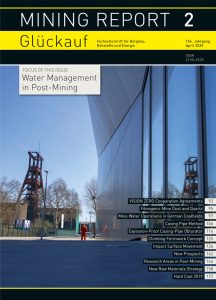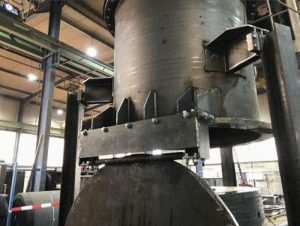The last post-mining edition of Mining Report Glückauf (issue 3/2019) focused on the problem of water management at former mine sites. Here the main challenge was how to deal with the volume of water arising in various sectors of the extractive industry after the cessation of mining operations. In this latest edition we shall be turning our attention to the current situation in respect of mine water pumping and management in the former Ruhr coalfield.
The end of active coal mining in North Rhine-Westphalia in December 2018 signalled the start of a post-mining phase whose impact is set to be extensive rather than selective in nature. Here mine water management has now become an eternity task and RAG Aktiengesellschaft, as the former operating company responsible for the coal industry, was quick to respond
With my best regards // Mit freundlichem Glückauf
Dipl.-Ing. Andreas-Peter Sitte
Chief Editor Mining Report Glückauf, Essen
Long-Term Management of Mine Water Operations in the German Coalfields – an Interim Evaluation of the Findings Based on Operating Plans and Hydrological Permits
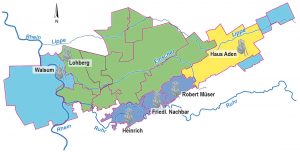
Fig. 1. Location of mine water pumping stations in the Ruhr area according to the new management plan. // Bild 1. Wasserhaltungen im Ruhrgebiet nach Umsetzung des Konzepts. Source/Quelle: RAG
Authors: AdM Dipl.-Ing. Philipp Hensel (BVR), AdB Dipl.-Ing. Jürgen Kugel (BD), AdB Dipl.-Ing. Tassilo Terwelp (BD), AdB Dipl.-Ing. Jörg Tuschmann (BD), Abteilung 6, Bezirksregierung Arnsberg, Dortmund/Germany
Read moreThe Casing Pipe Method of Converting Mine Water Pumping Stations to Well-Type Operation Based on the Example of Carolinenglück 3 Shaft
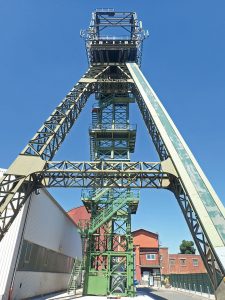
Fig. 14. Carolinenglück 3 shaft after restoration. // Bild 14. Schacht Carolinenglück 3 nach Abschluss der Arbeiten. Source/Quelle: RAG
Authors: Patrick Malejka, M.Sc, M.Eng., GEOtechnic – Ingenieurgesellschaft für Geotechnologie und Altbergbau, Bochum, Dipl.-Ing.(FH) Benjamin Röhl, RAG Aktiengesellschaft, Essen/Germany
Read moreExplosion-Proof Casing-Pipe Obturator with Flap Valve Mechanism
Optimising the mine de-watering arrangements involves converting the centralised drainage systems to water wells. In order to retain access to the mine water a series of casing pipes has to be cemented section by section into the filling column. These pipes can then be used at some future date to accommodate a number of submersible pumps. In view of the fact that gases can be released both from the abandoned mine workings, which are no longer being ventilated, and from the coal-bearing rock beds, there is a real risk of an explosive gas mixture being developed as the casing pipes are being installed …Authors: Dipl.-Ing. (FH) Benjamin Röhl, und Dipl.-Ing. Dieter Hardes, RAG Aktiengesellschaft, EssenGermany
Read moreDevelopment of a Concreting System Based on the Climbing Formwork Concept for the Partial Filling of the Friedlicher Nachbar Shaft
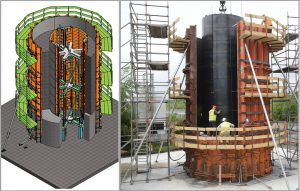
Fig. 13. Concreting test (left: planned scenario; right: reality). // Bild 13. Betonierversuch (links: Planung; rechts: Realität). Source/Quelle: RAG
Because of ongoing pumping operations the conventional method of partial backfilling using the casing pipe method could be used. What is more, the significant lack of vertical alignment in the shaft …
Authors: Dipl.-Ing. Carsten Linka, ZPP Ingenieure AG, Bochum, Dipl.-Ing. Dieter Hardes, RAG Aktiengesellschaft, Essen/Germany
Read moreLong-term Impact of Coal Mining on Surface Movement: Residual Subsidence versus Uplift
It is well known that longwall mining leads to a significant amount of surface subsidence. This is driven by a mechanical stress-deformation process that is initiated when the roof collapses in the mined-out area. Since entire coal basins recently have been closed in Europe, the focus has moved more to the long-term impact of mining. In various European coal basins, it has been observed that, after the mines were closed, there was a period of further residual subsidence, followed by upwards movement or uplift, which is linked to the flooding of the underground work areas. Based on data obtained by remote sensing techniques, this paper shows …Author: Prof. Dr. André Vervoort, Research Unit Mining, KU Leuven, Leuven/Belgium
Read moreNew Prospects
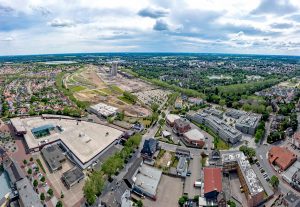
Fig. 1. The area of the former West colliery in June 2019. // Bild 1. Die Fläche des ehemaligen Bergwerks West im Juni 2019. Photo/Foto: RAG Montan Immobilien/Thomas Stachelhaus
Author: Stephan Conrad, RAG Montan Immobilien GmbH, Essen/Germany
Read moreResearch Areas in Post-Mining
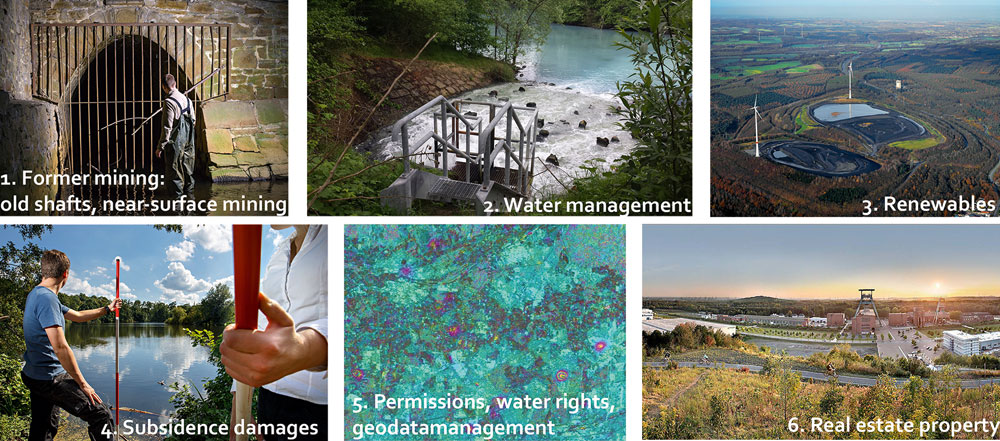
Fig. 2. Examples for risk fields in Post-Mining. // Bild 2. Beispiele für Risikofelder im Nachbergbau. Photos/Fotos: 1. ©THGA; 2. ©RAG; 3. ©RAG; 4. ©THGA; 5. JERS data ©JAXA, SAR and InSAR, Verarbeitung durch die Gamma Remote Sensing AG, 1998; 6. ©RAG MI/Thomas Stachelhaus
The institute is trying to fulfill central requirements of the UN to deal responsibly and sustainably with the resources of our planet. It plans to be a part of a national and international network in the interest of all social groups and the environment.
Author: Prof. Dr. Jürgen Kretschmann, Technische Hochschule Georg Agricola (THGA), Bochum/Germany
Read moreNew National Raw Materials Strategy: No Sustainability without Inclusion of Post-Mining
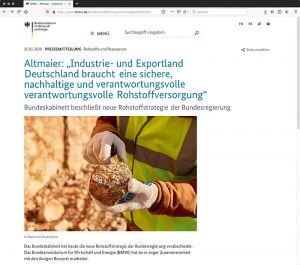
Fig. 1. BMWi information on the updating of the national raw materials strategy (4). // Bild 1. BMWi-Mitteilung zur Fortschreibung nationale Rohstoffstrategie (4).
Author: Dr. Kai van de Loo, Gesamtverband Steinkohle e. V. (GVSt), Essen, und Technische Hochschule Georg Agricola (THGA), Bochum
Read moreHard Coal 2019
The year 2019, just as the previous years 2017 and 2018, was a very poor one for hard coal in Germany. Electric power generation using hard coal was down by 31 % in 2019. Over the three years 2017, 2018 and 2019, cumulative power generation from hard coal fell by 49 % in comparison with 2016, i. e. by half. So the de facto exit from coal has been going on for a long time. If it were only a matter of reducing CO2, there would have been no need to make any decisions to phase out the generation of electricity from hard coal.Nevertheless, hard coal-fired power plants make an important contribution to supporting the expansion of renewable energy sources and to stabilising the electricity system. To prove this scientifically, the Verein der Kohlenimporteure e. V. (VDKi), Berlin/Germany, commissioned Deloitte Finance last year to conduct a study on the flexibility of hard coal-fired power plants. The objective of the study was …
Author: Prof. Dr. rer. pol. Franz-Josef Wodopia, Geschäftsführer, Verein der Kohlenimporteure e. V. (VDKi), Berlin
Read more